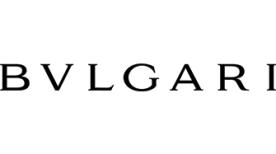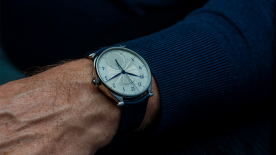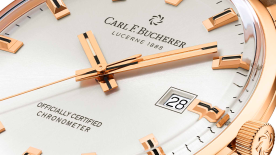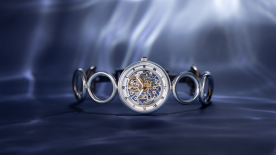The last time we spoke it was by telephone during the SIHH last year, when Bulgari announced its “Bulgari Protect” programme in support of Swiss retailers after the Swiss National Bank removed the exchange rate peg with the euro. How successful was this programme?
The Bulgari Protect programme was in force until August last year, when the Swiss Franc/euro exchange rate stabilized, even though it did not return to its historical level of 1.20 before the Swiss National Bank removed its peg. The rate is now around 1.10 and, by increasing prices in the euro zone, we have managed to bring prices in Switzerland back into line with those in the euro zone.
The programme was very well received because at the time we were one of the few brands who reacted quickly to the news across all our product range and it allowed us to close the year with positive figures for the Swiss market. This is all the more remarkable because as everyone knows 2015 was a difficult year for the industry.
What about the wider economic context, with a weaker Chinese economy, problems in Russia and a drop in the tourist trade?
Bulgari Protect did not just have a direct impact on prices, it also had a positive psychological impact. As far as our global business is concerned, the growth rate in Chinese tourism has slowed and after the terrorist attacks in Paris there was a big drop in the number of tour groups visiting countries like France and Italy, which also had an indirect impact on the Swiss market because a lot of these tour groups pass through Switzerland as well.
But aside from this, customs controls in China have had a direct impact on sales in specific product categories. For example, the tax applied to watches in China is 30%, irrespective of which country you are returning from, but for jewellery and leather goods it is only 10%. If you add fines to this it can make a big difference to the final price you pay for the watch. But the good news is that this is boosting domestic demand in China, since buying a watch locally may be a little more expensive but you have no risk of incurring additional customs charges and fines.
Do you feel competition on price, for example with models like the Diagono Magnesium you launched last year?
At Bulgari we tend to look more at the customer than the price. We do have the Diagono Magnesium from around 4,000 Swiss francs and up to 5,000 for the new models that we will present in Basel this year, but we remain convinced that a beautiful watch with a clear identity like the Octo, with a manufacture movement, in the 7,000 - 15,000 Swiss franc price range, will continue to dominate the market in terms of value. I think this should be our core focus.
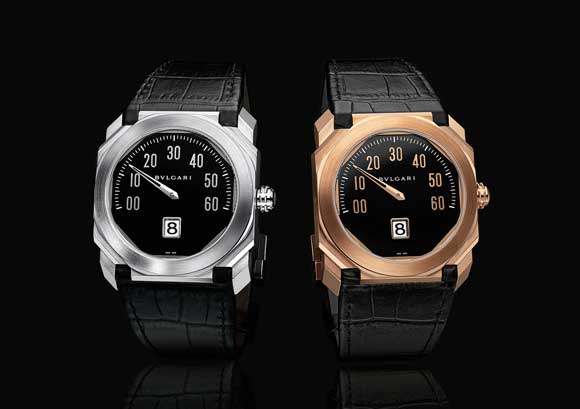
You presented the Bulgari Vault with WiseKey at Baselworld last year. Did you deliberately want to avoid launching just another smart watch?
Again, thinking of our customers, who are lovers of jewellery, they have a tendency to think about safes to keep their jewellery and watches in. We had the idea of offering them a genuine service in the form of a virtual safe with total security. There are two aspects to managing one’s digital footprint nowadays: one is storing the data and the other securing access to it. Bulgari offers a solution for both with the Bulgari Vault, because there is the storage space in the data centre in the Swiss Alps and the encrypted security to access it.
So far we have been testing the technology and we will soon be launching it commercially. The watch itself has also evolved a lot since it was first presented at Baselworld last year. From an aesthetic point of view we wanted to distinguish it more from the other Magnesium models and give it its own identity. From a technological point of view we have changed a lot, but I can’t say too much about that for the moment.
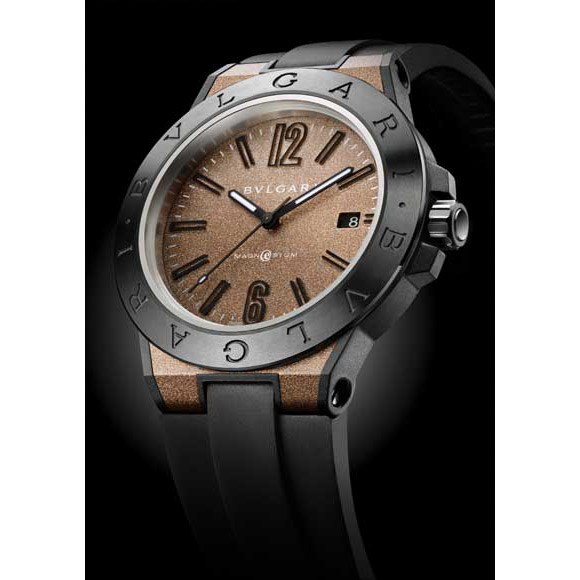
Could we see the same kind of technology find its way into other Bulgari products?
We are working more generally on the interactivity between the product and the customer. It can be in the context of data protection, as with the Bulgari Magnesium watch, or in the context of communication between the product and its environment. We are conducting tests for leather goods using RFID chips (for logistics) and NFC chips for interaction with the customer, who can look up information about the product on a microsite, for example, or find new variations of a bag they already have, for example. This is still in the test phase but the fact that there is no metal in leather goods makes the radio communication a lot easier and it is something that can offer a real benefit to the customer. It can cover everything from the manufacturing process to authentication, warranties and updates.
Are you happy with the current level of vertical integration for your watch production?
The main project was completed last year when we brought together all our expertise (development, component production and assembly) in Le Sentier. Together with our case making facility in Saignelégier and the dial manufacturing in La Chaux-de-Fonds we now have three major production centres, plus the final-stage assembly in Neuchâtel.
In terms of capacity, this perfectly meets our requirements, since apart from a few exceptions we produce all our three-hand movements ourselves. For ladies models we buy our quartz movements and small mechanical movements externally. As far as cases and dials are concerned, we produce around 75% in-house. We want to keep the 25% that we outsource to give ourselves flexibility but also to stimulate our own internal creativity.
What is your outlook for 2016?
It’s difficult to look into my crystal ball at the moment because the year has only just started and we don’t even have the statistics for January yet. But I don’t expect the situation to change much. This isn’t necessarily bad news. If you look at the last few years, exports have remained at their historically high levels. Growth was around 2% in 2013 and 2014 and around minus 3% in 2015 and whether it is plus 2% or minus 2% this year, the market will still be huge. There might be less dynamism in the market than over the past few years but creative brands with appealing products and the marketing to match can expect to win a greater share of what remains a relatively fragmented market.
For Bulgari, this means continuing to develop our core Lvcea and Octo lines. You have already seen the first signs of this at the start of the year and you can expect more in Basel. Together with the Serpenti, these three lines are our core collection and I think they still have a lot of potential. The Lvcea and Octo are still relatively young collections, less than six years old, but they have all set a precedent since their launch and generated a strong demand. If you consider some of the iconic watch models that are between 30 and 40 years old, you can see the potential that we have to develop these lines.



